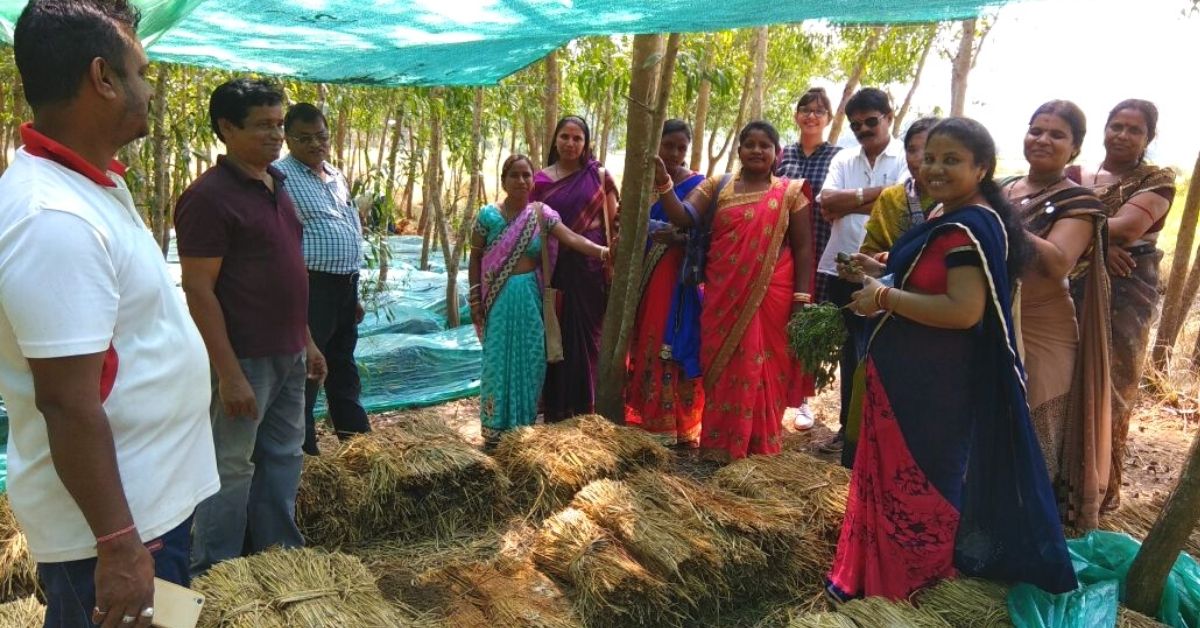For over a decade, a modest farmer’s simple innovation remained hidden from the world. It was only after his work was appreciated through an award by the Odisha government that his genius came to light.
Dilip Baral, a 52-year-old farmer from Resinga village entered the business of extracting seeds in 1997. As a farmer, Dilip engaged in the painstaking labour, with many others, of arduously putting his legs to work to crush and de-seed vegetables.
“Using manual and unskilled labour for crushing the vegetables to extract seeds proved a time-consuming exercise. A solution was needed for the menial work,” he says.
Never-ending process
Explaining the process of seed extraction, the farmer says the harvested vegetables need to ripe properly, then crushed with two legs or wood, and fermented in non-metallic containers for a day.

“The pulp from the fermented process is then cleaned with water and seeds are isolated and dried. The entire process is done manually and takes five labourers to crush three quintals of tomatoes and six quintals of brinjals in one hour,” Dilip says. It would take a month to de-seed 200 quintals of tomatoes harvested from his farm.
He adds that with this rate of production, he could sell about 25 kg of seeds a year.
“In 2000, I realised the need for engineering intervention and started thinking of solutions to use machines to carry out the work. I drew rough designs and planned a process that needed to be followed,” Dilip tells The Better India.
With no engineering background and a graduate degree in Arts, Dilip approached the local farming equipment manufacturers to materialise it.
“The professionals make threshers and other farming equipment, and I went to prepare the machine from scrap material. I needed a drum as a cylindrical tank, one hp motor, and a steel container with blades to put in the vegetables with a hammering mechanism attached to it,” Dilip describes.
A months work in days
After seven long years of improvisation and getting the expected result, Dilip developed the machine in 2007.
“It took a long time to experiment, which slowed the process of development. There was a shortage of funds to invest in building the machine. I had little to no help in working on the design. Moreover, the tomato being a seasonal crop meant that I could only try the device in winter months. Brinjal vegetables could be experimented with for longer months,” Dilip says.
Describing the operational part of the machine, he says the vegetables are loaded from the top, where the steel tank rotates with the help of a motor to cut and smash the vegetables with blades and hammer.
He adds that pulp is extracted from one end of the machine, while peels and other unwanted residue are removed from another exit point, thus separating the seeds in the process. After fermentation and washing, the seeds are ready to be packed and sold.
“The new machine can crush ten quintals of tomato and three quintals of brinjal efficiently in one hour. With this rate, I sell about 15 quintals of seeds in a year,” Dilip says.
Patented technology
In 2019, his innovation was recognised by the state government through the Abhinav award conferred upon him. When asked about the delay in taking note of his achievement, Dilip simply says, “No one asked about it.”
In 2018, the state government called for applications in innovations by farmers, and Dilip applied and eventually won the award. Now, the National Innovation Foundation (NIF), a Central government entity, has taken note of the innovation and filed a patent for the same. “They asked me to build five pieces for submission, and hopefully it will receive a patent,” he says.
If commercially available, the farmer says the machine will cost around Rs 20,000.
Despite years of efforts, Dilip says there is more room for improvement. “I am not an engineer, and there must be ways to improve the efficiency of the machine. I hope volunteers come forward to help develop the machine further,” he says.
If you found our stories insightful, informative, or even just enjoyable, we invite you to consider making a voluntary payment to support the work we do at The Better India. Your contribution helps us continue producing quality content that educates, inspires, and drives positive change.
Choose one of the payment options below for your contribution-
By paying for the stories you value, you directly contribute to sustaining our efforts focused on making a difference in the world. Together, let's ensure that impactful stories continue to be told and shared, enriching lives and communities alike.
Thank you for your support. Here are some frequently asked questions you might find helpful to know why you are contributing?

